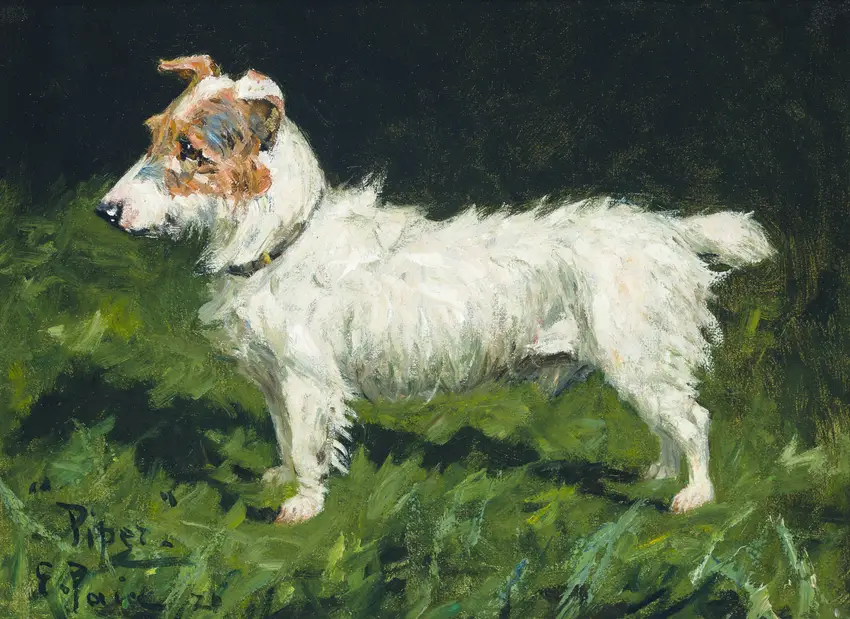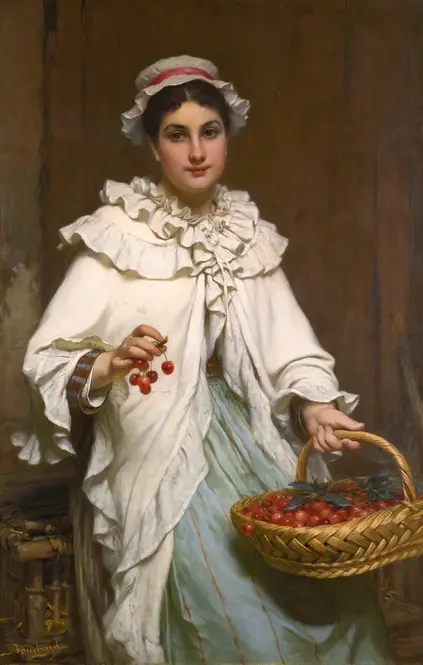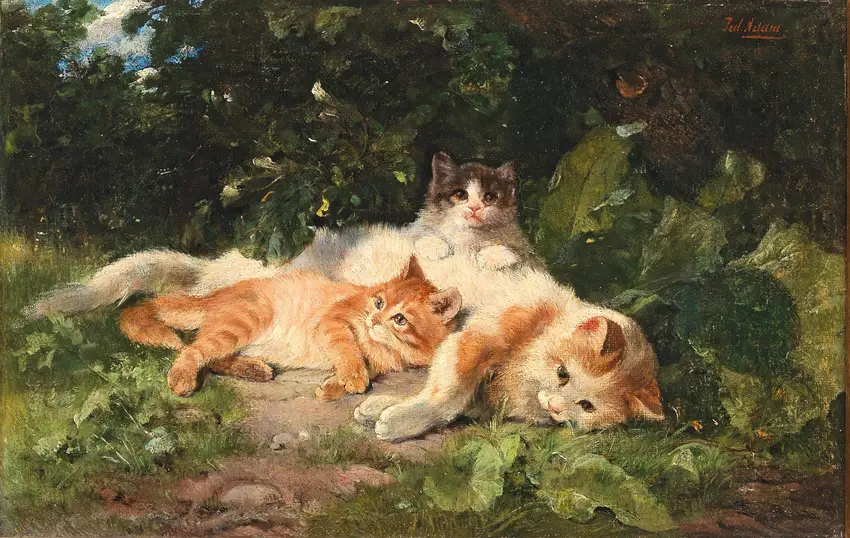Figurative
Celebrating the human form and presence, our figurative collection invites you into intimate portrayals of character, mood, and narrative. These works transcend realism, offering timeless reflections on the body, identity, and the human condition.
-
-full.webp)
The Young Ladies of Giverny, Sun Effect (1894)
A sunlit garden scene where light and color dissolve figures into a dreamy, vibrant impression of summer.
-

Piper, A Jack Russell Terrier
A vibrant portrait of a Jack Russell Terrier, bristling with energy and personality through dynamic brushwork and keen observation.
-
-full.webp)
Petite Bergère (1891)
A young shepherdess pauses in a sunlit field, her quiet dignity and the soft glow of the scene blurring the line between realism and dream.
-
-full.webp)
Young Woman in a Garden of Oranges (1891)
A woman stands in an orange grove, bathed in soft light, her expression caught between peace and longing.
-
-full.webp)
Love’s Jewelled Fetter (The Betrothal Ring)
A luminous portrayal of an ancient betrothal, where a ring becomes the focal point of emotion and opulence.
-
-full.webp)
Flora Priestley (Lamplight Study)
A luminous portrait bathed in lamplight, blending realism with impressionistic energy to evoke quiet introspection.
-

La cueilleuse de cerises
A woman gathers cherries under dappled sunlight, her quiet labor a tribute to the harmony between human hands and nature’s bounty.
-
-full.webp)
Woman at the Piano (1875)
A woman lost in music, her fingers hovering over piano keys as light wraps around her like a melody.
-

Cat with her Kittens
A tender portrayal of feline motherhood, where playful kittens and their watchful mother share a moment of quiet connection.
